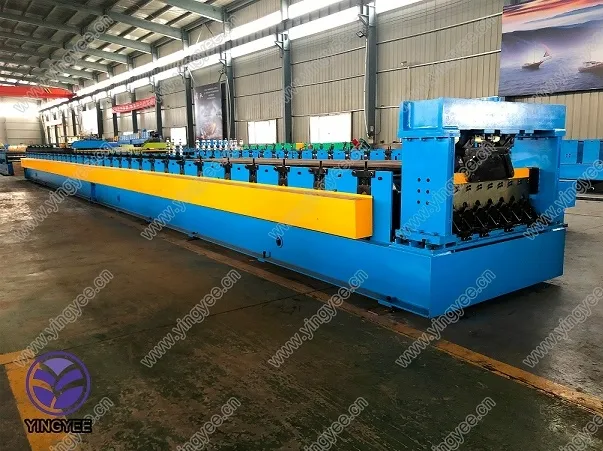
Understanding the Slitting Line A Key Component in Metal Processing
The slitting line is an essential piece of equipment in modern metal processing industries, primarily used for cutting large rolls of metal into narrower strips. This highly efficient technology serves various sectors, including automotive, construction, and appliances, where precise dimension and surface quality are critical. In this article, we will delve into the functioning, advantages, and applications of slitting lines.
How Slitting Lines Work
At its core, a slitting line is a continuous system that takes a large coil of metal, typically referred to as a master coil, and transforms it into multiple smaller coils or strips. The process begins with the uncoiling of the master coil, which is then fed through a series of rollers and cutting tools. The primary components of a slitting line include
1. Uncoiler This device unwinds the master coil, carefully controlling the tension to prevent damage. 2. Guiding System As the metal passes through the line, it must be correctly aligned. The guiding system ensures that the coil remains straight, which is crucial for achieving uniform strip widths.
3. Slitting Blades These are the sharp tools responsible for cutting the metal into desired widths. They can be adjusted depending on the specifications provided. The number of cuts corresponds to how many strips are produced from the master coil.
4. Re-coiler After slitting, the individual strips are wound back onto coils for easy handling and transport. The re-coiler ensures that the newly created coils have the right tension and are properly aligned.
5. Control Systems Modern slitting lines often include advanced control systems that monitor the entire process, making real-time adjustments based on thickness and quality parameters.
Advantages of Using Slitting Lines

There are several benefits to utilizing slitting lines in metal processing industries
- Efficiency Slitting lines automate the cutting process, which significantly reduces labor costs and increases throughput. High-speed operations can produce a considerable number of strips in a short time.
- Precision The advanced technology used in slitting lines guarantees that strips are cut to exact specifications. This precision minimizes waste and ensures that the end product meets strict quality standards.
- Versatility Slitting lines can be configured to handle a variety of materials such as stainless steel, aluminum, and other ferrous and non-ferrous metals. They can also accommodate different thicknesses and widths, allowing for customization based on customer needs.
- Automation With the integration of digital systems, slitting lines can operate with minimal human intervention. This automation reduces the likelihood of errors and enhances safety in the workplace.
Applications of Slitting Lines
The applications of slitting lines are vast and varied. In the automotive industry, for instance, manufacturers need consistently sized metal strips for parts such as chassis, doors, and frames. Construction companies benefit from slitting lines by obtaining precise metal components for roofing, siding, and structural supports. Furthermore, appliance manufacturers rely on slitting lines to create strips used in products such as refrigerators, stoves, and washing machines.
In conclusion, the slitting line is a vital machine in the metal processing landscape, ensuring efficiency, precision, and versatility in production. As industries continue to evolve towards automation and increased production capacity, the role of the slitting line will only expand, making it a cornerstone of modern manufacturing. By understanding its components and advantages, businesses can better appreciate the significance of slitting lines in their operations, leading to improved efficiency and product quality.